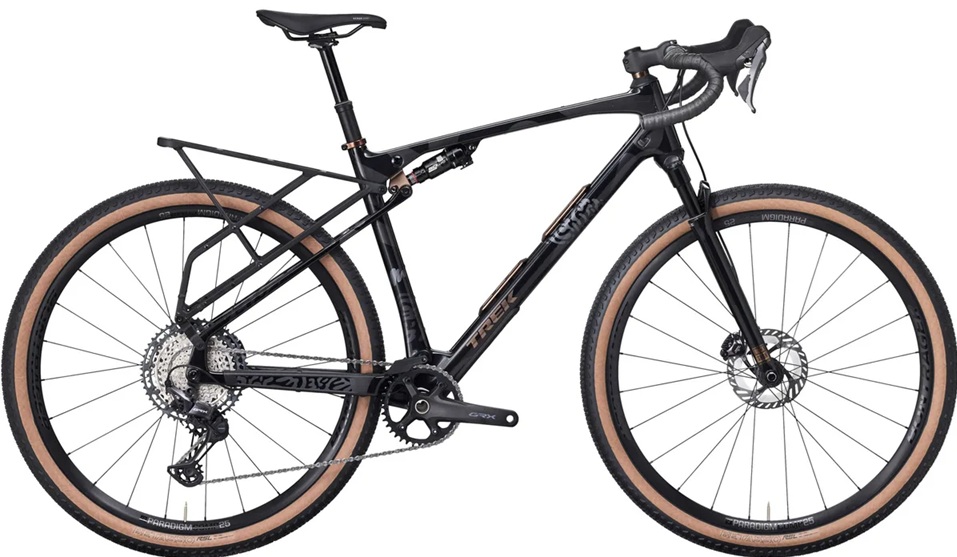
New Trek CheckOUT 2026 Full-Suspension Gravel Bike: Price, Versions, Tech Specs, In-Depth Complete Review
New Trek CheckOUT 2026 Full-Suspension Gravel Bike: Price, Versions, Tech Specs, In-Depth Complete Review
Trek has unveiled the CheckOUT, its first purpose-built full-suspension gravel bike. The 2026 model promises to redefine comfort and control on the roughest terrain while retaining the speed and versatility necessary for adventure. Unlike mountain bike conversions with drop bars, Trek claims the CheckOUT was designed from the ground up for extreme gravel use, utilizing OCLV 500 Series carbon and tested to mountain bike standards for durability.
Lab-Driven Design: Less Fatigue, More Control
According to Trek, the primary goal for the CheckOUT was to reduce rider fatigue. Testing conducted in the lab, simulating rough gravel surfaces, proved that the suspension system significantly reduces rider-to-bike decoupling—the phenomenon where the rider is forced out of the saddle on bumpy trails.
The test results are impressive and quantify the gains in control:
Vibrational Force Reduction: Vibrational forces reaching the rider were cut by 41.5% compared to a traditional rigid gravel bike.
Steering Input Reduction: The constant need for steering corrections on rough surfaces, a major source of fatigue, was reduced by 23% with 50 mm tires, and further by 16% with 55 mm tires.
This data confirms that the suspension system increases stability and confidence, significantly reducing effort during ultra-endurance rides.
Suspension Tech Specs and Components
The CheckOUT is optimized for moderate travel, designed to filter impacts without sacrificing pedaling efficiency.
Key Suspension Details
For the front, Trek collaborated with RockShox to create the Rudy XL, a beefed-up version of the Rudy fork that offers 60 mm of travel. It maintains a gravel-friendly 45 mm offset and provides generous tire clearance up to 56 mm. This fork will also be available separately for approximately 929 USD (around €1,010 and £900).
The rear suspension is managed by a RockShox SIDLuxe shock (170×27.5 mm), delivering 55 mm of rear-wheel travel. A crucial feature for descending control is the inclusion of a dropper post on all models. The top-tier SL7 uses the wireless RockShox Reverb AXS.
Geometry, Handlebar, and Bikepacking Focus
The bike features Trek's new Adventure Geometry, which boasts a longer reach and a higher stack compared to the rigid Checkpoint, positioning the rider in a more upright and rearward stance for long-haul comfort.
Trek also developed the new GR CheckOUT Bar made from IsoCore Carbon. This handlebar is designed to be narrower on the tops for better aerodynamics, but flares out by a substantial 12 cm in the drops for maximum control on singletrack.
The bike's commitment to bikepacking is evident in its numerous mounting options: frames size M/L and up offer a total of 18 external mounting points. The most innovative solution is the proprietary rear rack with integrated linkage that moves in sync with the rear suspension, preventing cargo from being excessively rattled and significantly improving stability when loaded.
Pricing and Versions (2026 Lineup)
All models and the frameset kit are made from OCLV 500 Series carbon.
The entry-level complete bike, the CheckOUT SL5, is priced at $5,799 (approximately €5,000 and £4,500).
The flagship CheckOUT SL7 AXS comes in at $8,999 (approximately €7,700 and £6,500).
The Frameset (frame kit with shock) is available for $3,699.99 (approximately €3,100 and £2,700).
The Trek CheckOUT, with its dedicated travel and endurance geometry, marks the official entry of a leading brand into the full-suspension gravel segment, proving that two-wheeled suspension is here to stay.
